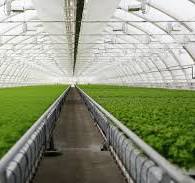

· Typical earthworms that you find in your garden are not suitable for vermicomposting. These are soil-dwelling worms that do not process large amounts of food waste and don’t reproduce well in confined spaces.
· Instead, worms commonly known as red-worms or red wigglers are preferred because they reproduce rapidly, are communal and tend to remain on the surface while feeding.
· There are several species of vermicomposting worms but the most common are Eisenia fetida and E. Andrei. Red wigglers are hermaphrodites having both male and female reproductive parts; however, it still requires two worms to mate with each worm donating sperm to the other worm.
· Eisenia fetida is best species for vermicomposting in environments like Pakistan.
· Under ideal conditions, a worm bin population can double about every 2 months (4-6 weeks from cocoon to emergence and 6-8 weeks from emergence to maturity).
· The “band” around a worm, known as the clitellum, indicates maturity and is reproductively active. Cocoons are about the size of a match stick head, turning pearly white to brown as they develop until one to several baby worms hatch.